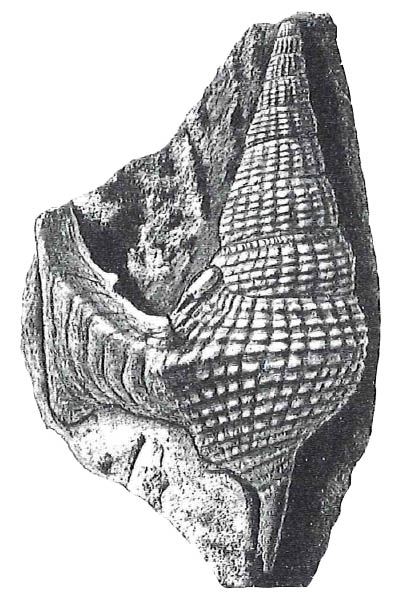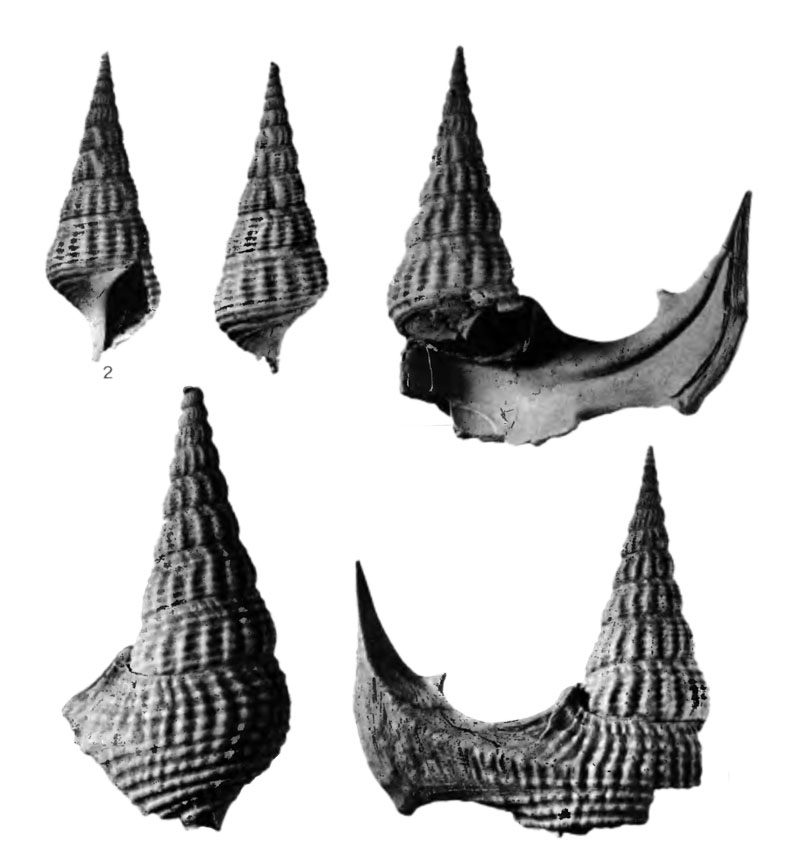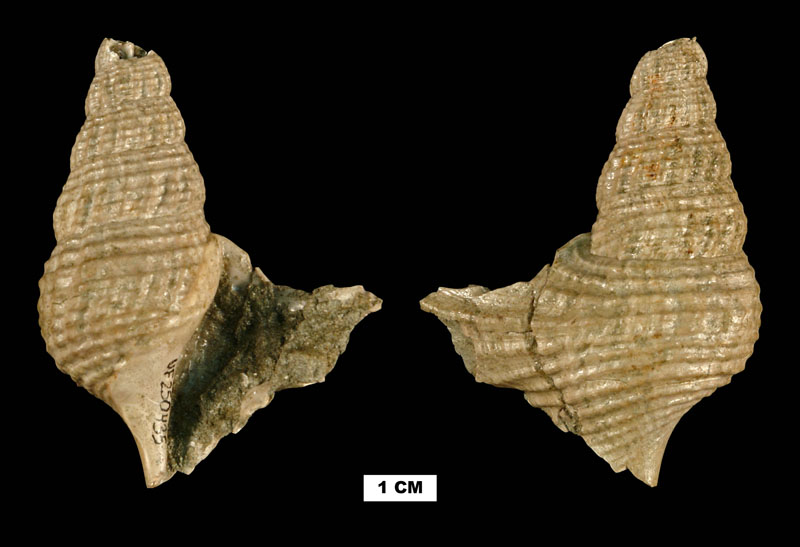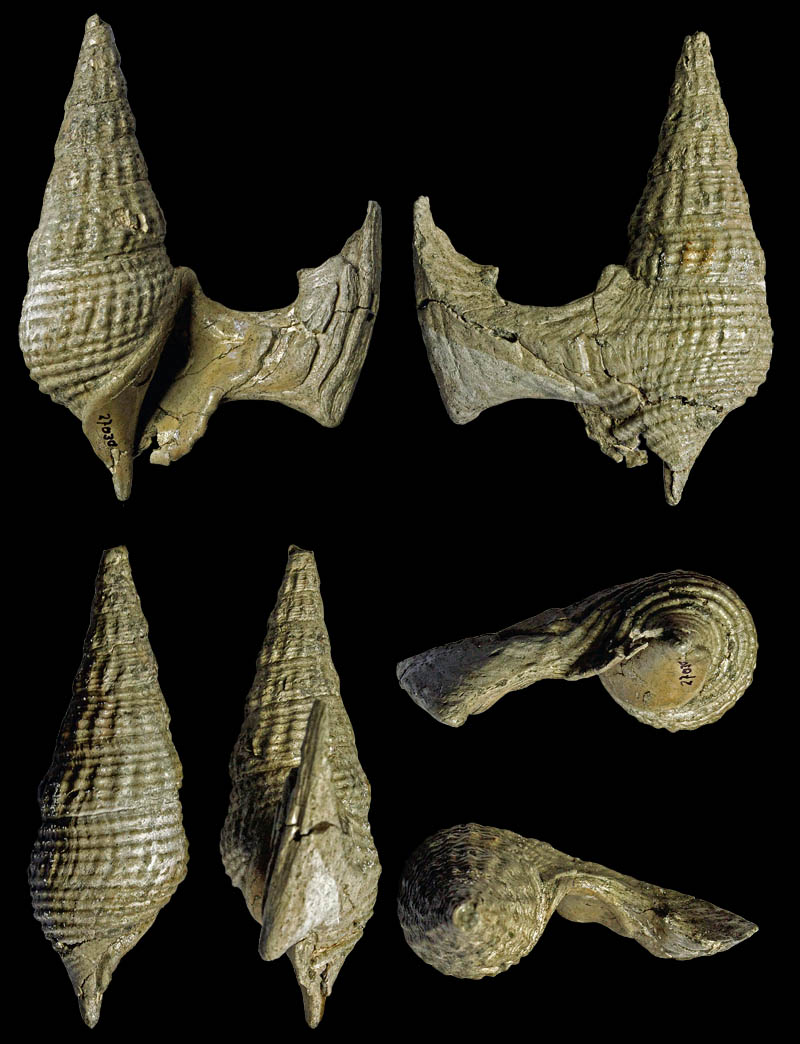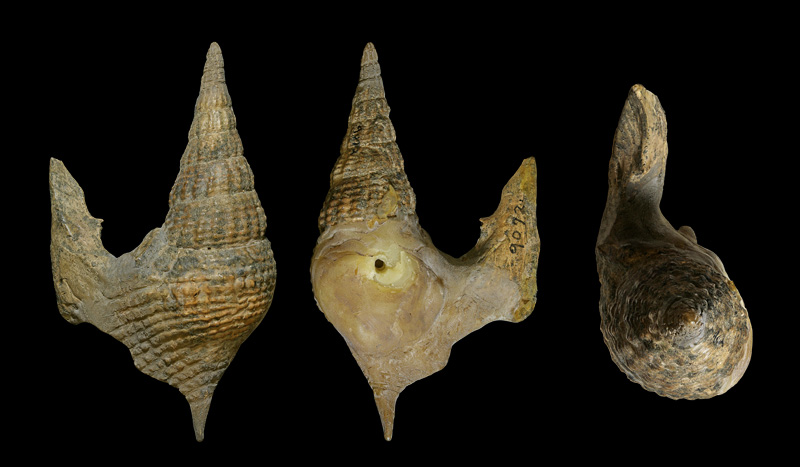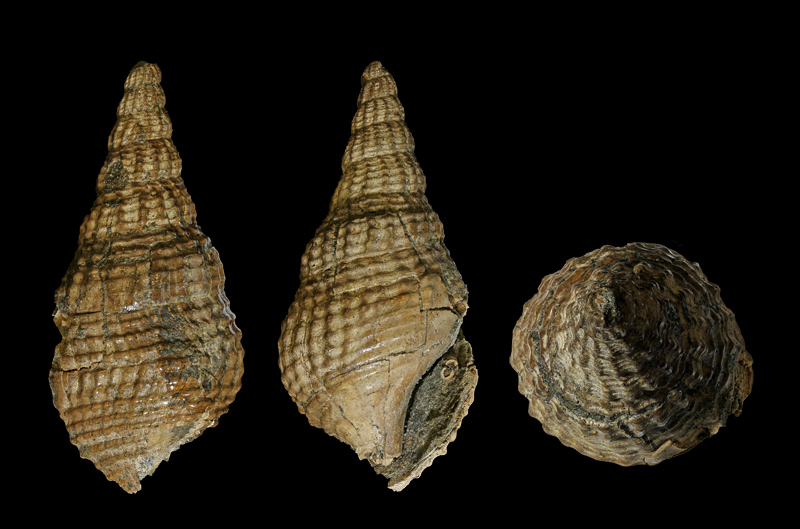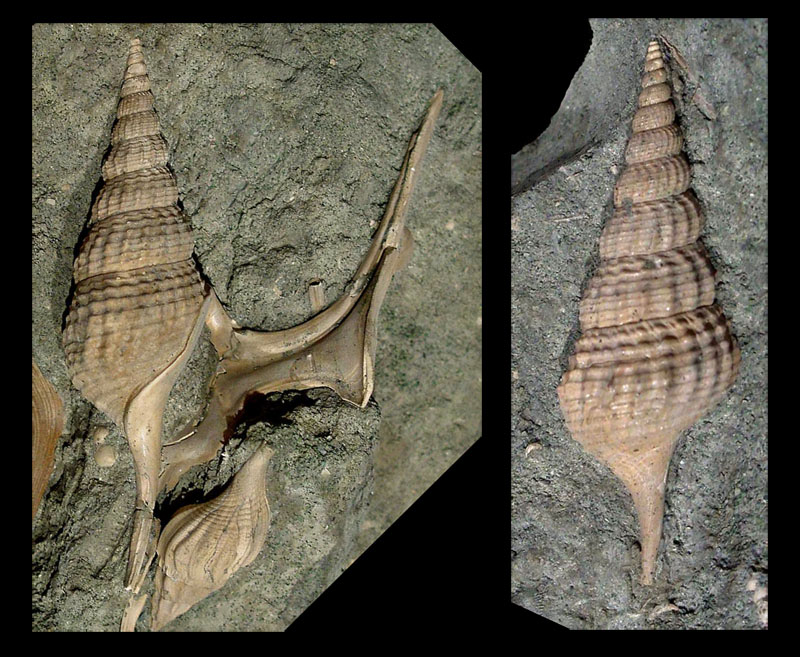Stromboidea
Original description of Anchura substriata by Wade, 1926:
- "Shell large, outer lip abnormally expanded; spire very acuminate, its elevation greater than half the total altitude of the shell; spiral angle low at the apex and increasing in size with age; whorls 13 or 14, feebly convex, increasing in size gradually; protoconch small and elevated, coiled three times, its whorls well rounded and regular; sculpture e1aborate, consisting of both axial and spiral elements; axial elevations low and broadly sinuous, best developed, on the whorls of the spire and disappearing almost entirely on the body; axial elevations overridden by spirals; low, irregular-shaped nodules developed at their intersections on the later whorls; primary spiral fillets 12 or 14 on the body and 6 on the whorls of the spire; spiral depressions marked by 3 to 6 fine secondary spiral threads; the fourth spiral fillet from the suture persists as an elevation to the most posterior point of the expanded outer lip, and the adjacent four spiral ridges break up into secondary lirae and spread out with the secondary threads in the interspaces in fan shape over the expanded outer lip; suture impressed; body very slightly constricted posteriorly and abruptly constricted in front, where it merges into a narrow, smooth, and straight anterior canal aperture glazed with callus; inner aperture broadly lenticular, produced in front into a narrow open canal, slightly notched posteriorly and extending in a curved groove on the inner side of the outer lip to the most posterior point of this lip; -this groove is obscured by callus in old-age stages; outer lip very widely expanded into a wide abnormal lip, which near the outer margin is slightly lobed in front and produced backward into a long, sharp, slightly curved, spur-shaped projection; extreme outer margin broadly arcuate; outer lip thin in young adults but very much thickened on the inner side of old adults; inner lip excavated medially; columella smooth; parietal wash thin and extending far out on the adjacent body region."
Locus typicus: Dave Weeks place on Coon Creek, McNairy County, Tennessee, USA.
Stratum typicum: Ripley Formation, Maastrichtian, upper Cretaceous
Types: holotype USNM32924, hyptypes USNM 128514-128516 (Sohl, 1960)
Anchura substriata Wade, 1926, pl. 52, fig. 10
History and Synonymy
Anchura substriata in Sohl, 1960, pl. 12, fig 2, 3, 11 and 13
- image courtesy of the U.S. Geological Survey
Specimens from institutional collections
Anchura substriata Wade, 1926; Dave Weeks place, Coon Creek Formation, Maastrichtian, Cretaceous; Coon Creek, Enville, McNairy County, Tennessee, USA; Coll. Florida Museum of Natural History UF250435
Anchura substriata Wade, 1926; Ripley Formation, Maastrichtian, upper Cretaceous; Coon Creek, McNairy County, Tennessee, USA; 1996; Coll. Stichting Schepsel Schelp no. SSS 27030
Anchura substriata Wade, 1926; Coon Creek Tongue, Selma Group, Ripley Formation, Maastrichtian, Cretaceous; Mr. Dave Weeks' farm, on Coon Creek, 3.5 mi S of Enville and 7.5 mi N of Adamsville, McNairy County, Tennessee, USA; Coll. Yale Peabody Museum of Natural History YPM IP 009072
Anchura substriata Wade, 1926; Coon Creek Tongue, Selma Group, Ripley Formation, Maastrichtian, Cretaceous; Mr. Dave Weeks' farm, on Coon Creek, 3.5 mi S of Enville and 7.5 mi N of Adamsville, McNairy County, Tennessee, USA; Coll. Yale Peabody Museum of Natural History YPM IP 056449
Specimens from private collections
Anchura substriata Wade, 1926; Ripley Formation, Maastrichtian, upper Cretaceous; Ripley, Tippah County, Mississippi, USA
Reference:
Internet:

